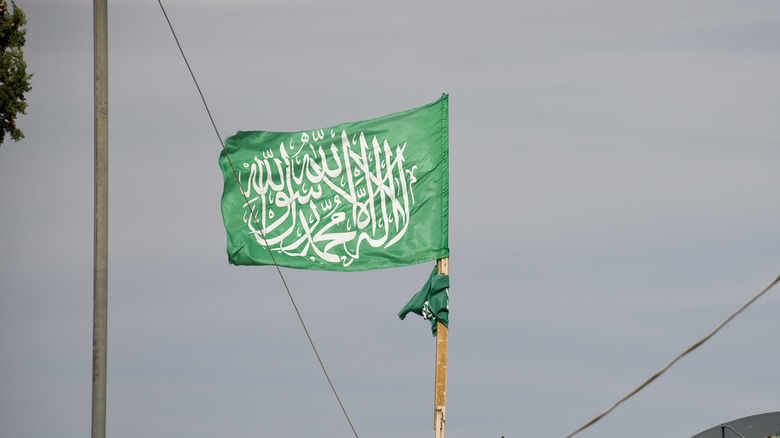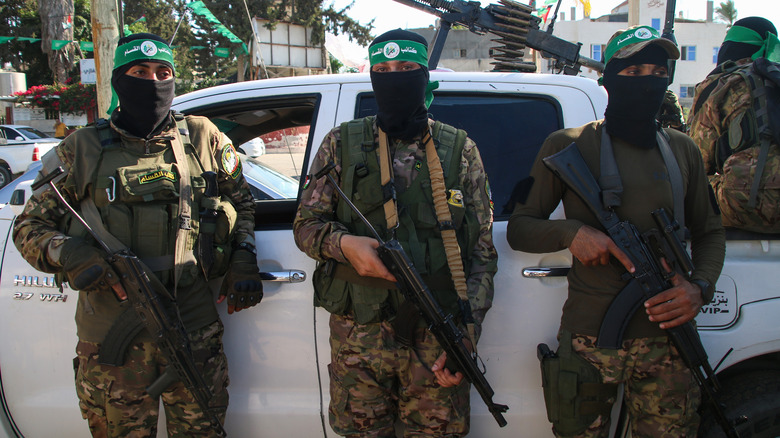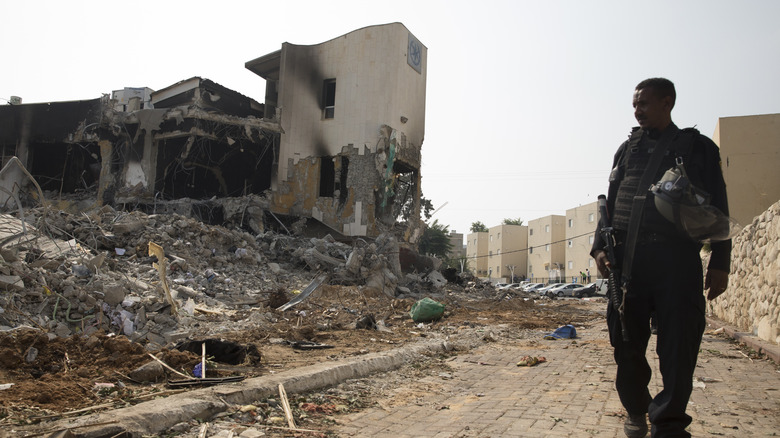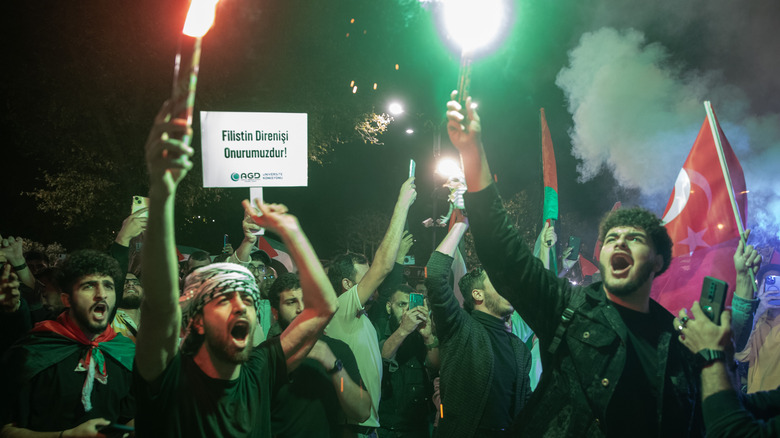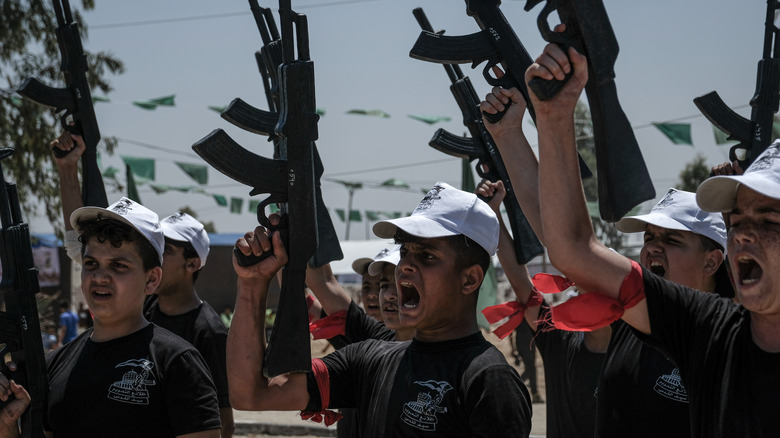What Is Hamas?
To Jews the world over, the Holy Land represents the foundation of cultural identity, historical truth, and religious belief. Muslims and Christians hold the region as sacred, as well. As long as that significance has held, people have fought and died in attempts to claim ownership over that special stretch of land along the eastern border of the Mediterranean Sea, also known as the Levant, from modern-day Lebanon south to Egypt. Contemporary sociopolitical conditions, faces, and names are different, and cavalry, archers, and swords have been swapped for rifles, jeeps, and camouflage. And so, the ancient conflict marches on under the contemporary guise of nation-states, political factions, and terrorist groups. Hamas is one such terrorist group.
The eventual formation of Hamas connects to the founding of Israel in 1948. Israel might have been established on the historical Jewish land, but it also gobbled up the state of Palestine and shoved Palestinians into two, ever-dwindling patches of nearby land in the West Bank and Gaza, as Open Democracy depicts. Come 1964 the pan-Arab Palestine Liberation Organization (PLO) was founded to represent Palestinian interests in the region. By 1974, the PLO claimed to be the "sole and legitimate representative of the Palestinian people," an overreaching move which inadvertently gave rise to Hamas in 1987, a spin-off of the radical, Islamic, militant Egyptian Muslim Brotherhood that espouses violence as their tool of change, as Counterterrorism Ethics describes. Hamas has relentlessly attacked Israel for decades, conducting small-arms assaults, large-scale bombings, roadside bombings, and more.
Cutting apart Israel and Palestine
Hamas is just one facet of a maddeningly complex conflict that formed almost 3,000 years ago in the original Palestine, which sat in the middle of modern-day Israel. The Biblical King David conquered the region's Canaanites and took Jerusalem in the 10th century B.C.E., then the Babylonians took over and exiled its Jews from 586 to 538 B.C.E. before the Persians ruled the area until 332 B.C.E. After that, Alexander the Great's dynasty dominated the region from 332 to 63 B.C.E., and the Romans took over from 63 B.C.E. to 313 C.E. All this is to say: taking the interwoven flow of peoples of over time, modern ethnic, national, or military groups — including Hamas — arguably can't go back far enough in history to decree who has the absolute, final "right" to any land at all.
And yet, History explains that Palestine was the destination of choice for many Jews fleeing World War II. Following the war's end in 1945, countries like the United States sympathized with Jewish people and advocated that Palestine get cut into halves, with one half becoming the Jewish-owned Israel. In 1947 the nascent United Nations voted "yes" to this Partition Plan, and only a year later Jordan, Iraq, Syria, Egypt, and Lebanon joined forces to stop it from happening. Israel won this Arab-Israeli War in 1948 and attained sovereign state status. Since then, Israel and Palestine have fought nonstop within their semi-shared land, and groups like Hamas emerged from that struggle.
An offshoot of the Egyptian Muslim Brotherhood
As Open Democracy shows, the United Nation's original land-dividing plan nested Palestine within Israel, and also split Palestine into two parts: the West Bank abutting the Dead Sea in the east, and Gaza along the Mediterranean Sea in the west. But, Palestine itself wasn't recognized as a sovereign state, and following one Arab-Israel War after another – 1956, 1967, 1973, 1982, and 2006 — Palestinian territory receded further. As the Global Centre for the Responsibility to Protect explains, Israel has illegally occupied Palestinian territory since 1967 after the Six-Day War.
Hamas, meanwhile, as Al Jazeera explains, wants a Palestinian border conforming to its 1967 shape, but without Israel. Israel, Hamas says, is a sham, invader nation without legitimate statehood. In 2017, Hamas leader Khaled Meshaal said, "We shall not waive an inch of the Palestinian home soil no matter what the recent pressures are and no matter how long the occupation." And so, Hamas seeks to reform Palestine in its own Islamic fundamentalist image and obliterate Israel in the process.
Such statements come 30 years after Hamas' initial 1987 formation as an offshoot of the world's oldest fundamentalist, militant Islamic group, the Egyptian Muslim Brotherhood which formed in 1928. The Brotherhood, a revolutionary religious organization that still exists to this day, believes in the application of Islamic law to all aspects of life. As the Council on Foreign Relations explains, the Brotherhood gave rise not only to Hamas but also to Al-Qaeda.
Occupying Gaza and funded by Iran
Tension and violence between Hamas and Israel have waxed and waned over the decades, and gone through cycles of peace talks, temporary cessations in fighting, resumed attacks, etc. In 1999 — a critical turning point in the conflict — Al Jazeera explained that the Oslo Accords granted Palestine sovereign nation status. Not satisfied with the resolution, Palestinians revolted against Israel with suicide bombers, sniper rifles, rockets, and more. While Hamas isn't directly discussed in relation to these attacks, the presence of such weaponry is telling.
Israel fought back, and thousands died on both sides in what became known as the second intifada – the first intifada happened in the late 1980s and was more of a loose street rebellion rather than an organized resistance. Figures vary, but Vox reports that over 4,000 people died from 2000 to 2005, while Deutsche Welle reports more than 5,000 dead from 2000 to 2007. The instability created by this conflict allowed Hamas to move into Gaza, take it over in 2007, and occupy it to the present. In response, the BBC says that Israel has blockaded Gaza ever since, stranding its 1 million people and forcing about 80% of them to rely on international aid to survive.
To make matters worse, Counterterrorism Ethics says that Hamas has received financial backing from Iran, a state ruled by fundamentalist Islamic leadership since 1979. Iran has forked over millions to Hamas, as well as given them advanced rocketry.
Political power and youth camps
It may surprise many readers, but Hamas isn't just a military group, it's a political one. Hamas leadership won governmental elections in Palestine in 2006, the year before Hamas took over Gaza. They also proved a challenge to Fatah, Palestine's leading, secular, non-violent political party. By 2011, as Al Jazeera reports, Hamas had grown so much in power that it and Fatah agreed to work together, a move that looks conciliatory on the surface but legitimizes Hamas' violent measures. Those measures continue to this day, including the recent October 2023 attacks, as does the uneasy alliance between Hamas and Fatah. Palestine's official, legal president in 2023, it should be noted, is Fatah President Mahmoud Abbas.
Meanwhile, Hamas continues to grow, consolidate power, and become increasingly organized. Even by 2015, The Washington Post described Hamas training camps in Gaza attracting 17,000 recruits. Would-be troops aged 15 to 21 lined up in "crisp military fashion" before conducting military drills, doing gun training with Kalashnikovs, throwing grenades, and generally learning how to conquer their "Zionist enemies."
The statements of 16-year-old Ahmad Ismail perfectly portray the central, territorial conflict between Palestine and Israel, one going back to the years following World War II, but which hearkens back to the ancient conflict between King David and the Canaanites described earlier. "I want to fight Israel," he simply said. "I want to kick them out of our land. I am ready now" (via The Washington Post).
